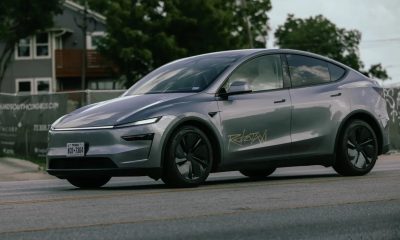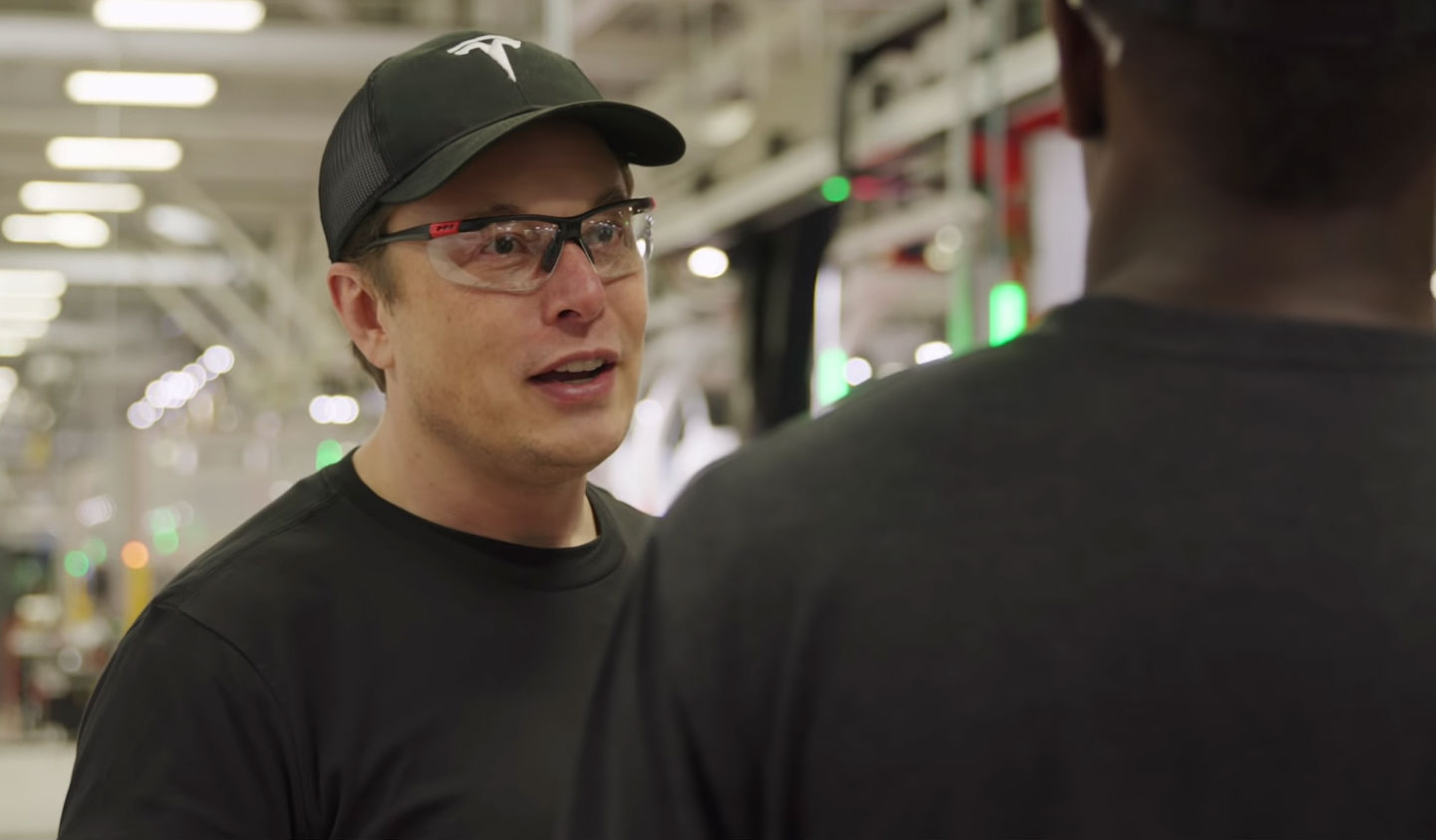

News
The ‘Elon Musk Method’ explains Tesla’s runaway success in the EV sector
Over his 16-year tenure at Tesla, Elon Musk went from knowing very little about the automotive business to being the CEO of the world’s most valuable carmaker by market cap. The journey towards Tesla’s current place in the electric vehicle sector, together with the numerous small milestones that the company has achieved over the years, is partly due to Musk’s style. Without the “Elon Musk Method,” Tesla’s successes would likely have been not as notable, and most certainly not as radical.
As noted in a Reuters article, Elon Musk’s record has shown that beyond the rockstar bravado that he displays on social media platforms like Twitter at times, the Tesla CEO is a quick learner who is smart and strategic enough to forge alliances with companies that had tech that Tesla lacked. Musk would then follow this up by hiring the smartest people available in the industry, before powering through boundaries that limited companies that are more risk-averse.
Under Musk’s leadership, Tesla flourished as a vertically-integrated electric car maker. From computers to car seats and now to battery cells, Musk is intent on making Tesla more and more independent. Speaking with the news agency, a former senior executive at Tesla noted that Musk is consistently set on pursuing improvements that would make something better, faster, and cheaper. “Elon doesn’t want any part of his business to be dependent on someone else. And for better or worse – sometimes better, sometimes worse – he thinks he can do it better, faster and cheaper,” the executive said.

According to people familiar with Tesla’s strategy in its early days, Musk has always been looking to learn more about the auto industry. He accomplishes this through several means such as strategic partnerships and aggressive talent recruitment. Back then, the goal of Tesla was reportedly to create a digital version of Ford’s iron-ore-to-Model-A production system, which was developed in the late 1920s. Former Tesla supply chain executive Tom Wessner noted that during these times, “Elon thought he could improve on everything the suppliers did – everything. He wanted to make everything.”
Among these components, of course, were the battery cells that are used for Tesla’s electric cars. Musk’s subordinates have reportedly argued against the idea of developing proprietary battery cells, but the CEO has been adamant about his goal. A former Tesla veteran who spoke to Reuters added that such a reaction from Musk is well within character. “Tell him ‘No’ and then he really wants to do it,” the veteran said. This is something that has happened in the past, as Musk was reportedly looking into battery cell manufacturing since 2011, well before going into a close partnership with Panasonic in 2013.

Tesla’s relationship with Panasonic could be described as a roller coaster ride. Tesla’s demands during the Model 3 ramp appeared to have strained the capabilities of its Japanese partner, and last year, reports emerged alleging that the two companies were growing apart. Yet even with the upcoming debut of Tesla’s Roadrunner cells, Panasonic maintains that it has a strong relationship with Tesla. “There has been no change in our relationship with Tesla. Our relationship, both past and present has been sound. Panasonic is not a supplier to Tesla; we are partners. There’s no doubt our partnership will continue to innovate and contribute to the betterment of society,” a Panasonic spokesperson stated.
It appears that Tesla’s long partnership with Panasonic is part of the building blocks of the Roadrunner project. True to form, Musk likely used the knowledge he learned from the veteran Japanese firm to help create an in-house battery cell production line that could be perfectly designed for Tesla’s electric vehicles and energy products. This, in a way, echoes much of Tesla’s development alliance with Daimler in the past. Daimler was an early investor in Tesla, and during the time, Musk reportedly became very interested in sensors that could help keep cars within lane lines. As noted by a senior Daimler engineer, the Tesla Model S lacked the necessary cameras and driver-assistance sensors to match the flagship features of the Mercedes-Benz S-Class then. Musk and the Tesla team then went to work, and the result was history.
“He learned about that and took it a step further. We asked our engineers to shoot for the moon. He went straight for Mars,” the Daimler executive said.
News
SpaceX successfully launches 100th Starlink mission of 2025
With 100 Starlink missions completed for 2025, space enthusiasts have noted that SpaceX has successfully launched 2,554 Starlink satellites so far this year.
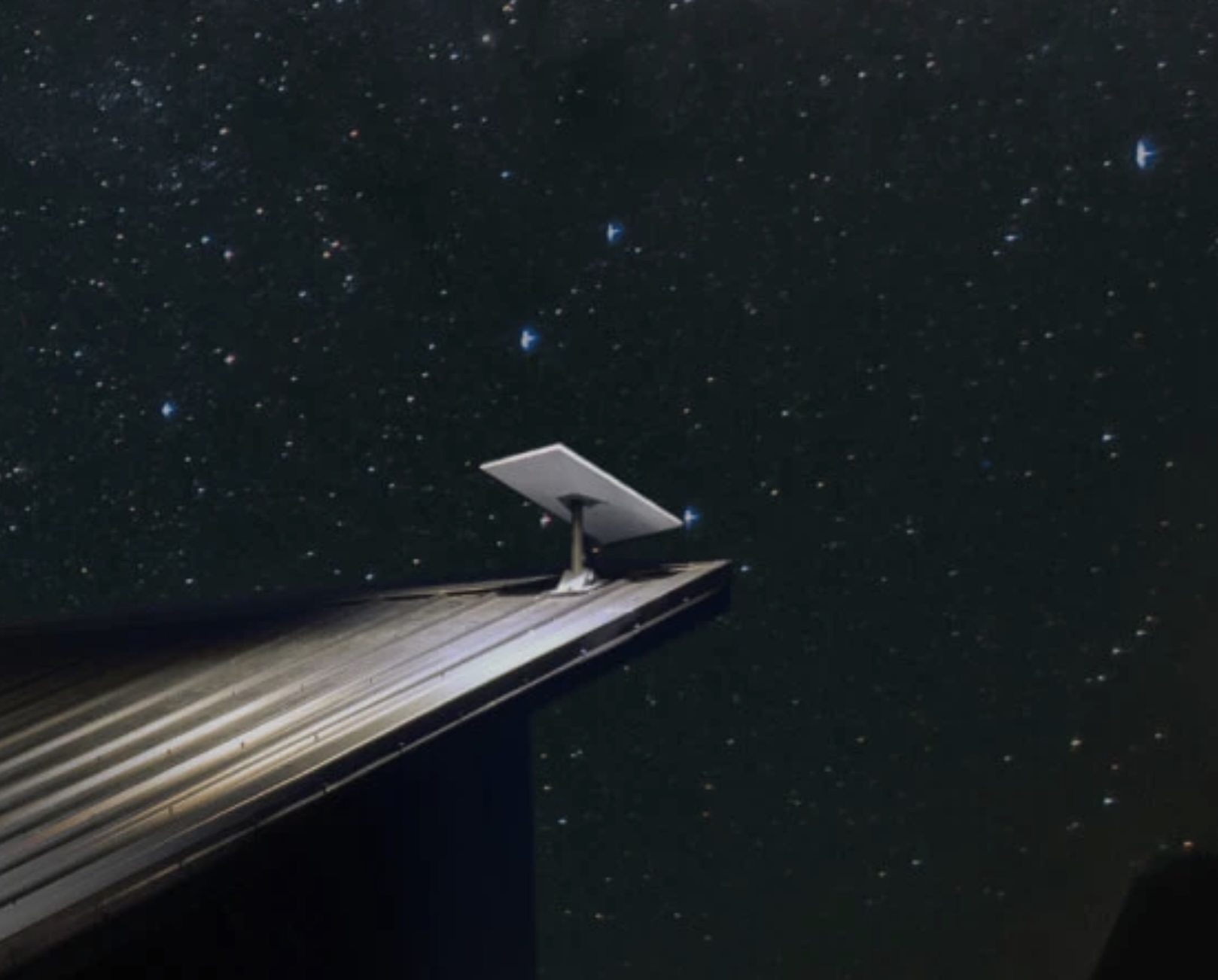
SpaceX achieved its 100th Starlink mission of the year on Friday, October 31, marking another milestone for 2025.
A Falcon 9 rocket carrying 28 Starlink broadband satellites successfully lifted off from Vandenberg Space Force Base in California at 4:41 p.m. ET, carrying another 28 Starlink satellites to Low Earth Orbit (LEO).
Falcon 9 booster’s 29th flight
Roughly 8.5 minutes after liftoff, the Falcon 9’s first stage touched down on the drone ship Of Course I Still Love You in the Pacific Ocean. This marked the booster’s 29th flight, which is approaching SpaceX’s reuse record of 31 missions.
This latest mission adds to SpaceX’s impressive 138 Falcon 9 launches in 2025, 99 of which were dedicated to Starlink, according to Space.com. The company’s focus on reusing boosters has enabled this breakneck pace, with multiple launches each week supporting both Starlink’s expansion and external customers.
Starlink’s network continues massive global expansion
Starlink remains the largest active satellite constellation in history, with more than 10,000 satellites launched, nearly 8,800 of which are currently active. SpaceX recently achieved Starlink’s 10,000-satellite milestone. With 100 Starlink missions completed for 2025, space enthusiasts have noted that SpaceX has successfully launched 2,554 Starlink satellites so far this year.
Starlink, which provides high-speed, low-latency internet connectivity even to the world’s most remote areas, has been proven to be life-changing technology for people across the globe. The service is currently operational in about 150 countries, and it currently has over 5 million subscribers worldwide. From this number, 2.7 million joined over the past year.
News
Tesla shares updated timeframe for Cybertruck FSD V14 release
The Cybertruck was expected to receive FSD V14 before the end of the month, but Tesla was not able to meet the target.
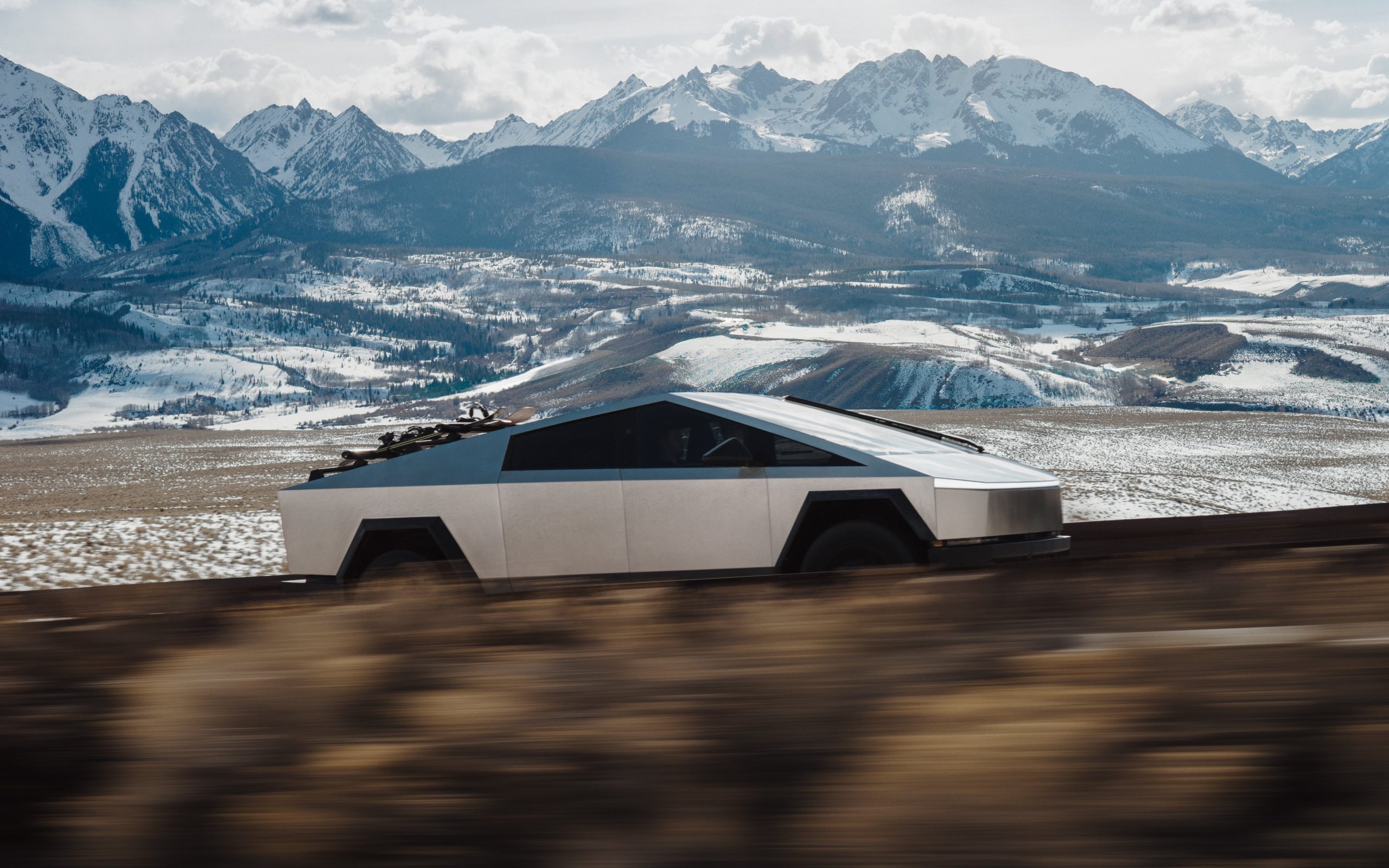
Tesla’s Full Self-Driving (FSD) V14 update for the Cybertruck could arrive this weekend, as per recent comments from Director of Autopilot Software and VP of AI Ashok Elluswamy.
The Cybertruck was expected to receive FSD V14 before the end of the month, but Tesla was not able to meet the target.
Cybertruck FSD V14
Considering the extended wait for FSD V14, it was no surprise that several Cybertruck owners were asking for updates about the system’s rollout to the all-electric pickup truck on Friday. These included the official Cybertruck X account, which responded to Elluswamy’s end of month estimate with “I only see trick. Where is my treat.”
This prompted a response from the AI executive, who replied with, “Sorry, pushing for early access Cyber release over the weekend.” This means that if all goes well, Cybertruck owners would be able to experience FSD V14 very soon. Some, however, are wondering if Tesla would go straight to V14.2 for the Cybertruck’s FSD V14 update, or if the vehicle will receive V14.1 first.
Tesla pushes to unify FSD experience across its lineup
The upcoming Cybertruck rollout represents the next step in Tesla’s efforts to roll out FSD capabilities across all of its vehicles. FSD V14 is a notable step forward for the company’s AI-driven self driving system, with features like Mad Max mode getting positive reviews from longtime Full Self Driving testers.
For the Cybertruck, the FSD V14 update would mark one of its first major over-the-air upgrades for the vehicle. Likely due to its size, the Cybertruck tends to receive FSD updates later than the S3XY lineup, which is quite surprising considering that the all-electric pickup truck is a premium-priced vehicle that is home to some of Tesla’s most advanced technologies.
News
“Tesla Ride” program lets riders experience FSD and Grok AI in real-world demos
The initiative aims to bring supervised Full Self-Driving demos and Grok AI-guided experiences to consumers in real world trips.

Tesla has launched a new service designed to make its Full Self-Driving (FSD) technology familiar to all commuters.
Dubbed the “Tesla Ride” program, the initiative aims to bring supervised Full Self-Driving demos and Grok AI-guided experiences to consumers in real world trips.
How Tesla Ride Works
As per the official Tesla Ride website, the session will allow participants to sit in the driver’s seat while a Tesla Advisor rides shotgun as co-pilot. The Tesla Advisor then guides riders through the company’s latest supervised FSD features, comfort settings, and in-car entertainment. Participants would also be able to interact with Grok AI in the vehicles. Grok will be capable of answering questions during the ride, and it will even tell stories along the way.
Tesla noted, however, that Tesla Ride sessions are capped at 45 minutes each, and it requires participants to have a valid driver’s license and insurance. Interested participants are also advised to call beforehand so they can schedule their Tesla Rides.
Marketing push and reach
The Tesla Ride program runs across several markets from October into November, and in some locations into the end of December 2025. Participating states are numerous, from Michigan to Virginia to Illiois, Nevada, and California, among others. A look at the official webpage for Tesla Ride shows that the company is still taking a very cautious approach with the program, with disclaimers clearly stating that FSD Supervised does not make Teslas autonomous just yet.
Tesla’s focus on safety with FSD was highlighted recently by Senior Vice President for Automotive Tom Zhu. “Elon said it in 2021: “For self-driving, even if the road is painted completely wrong and a UFO lands in the middle of the road, the car still cannot crash and still needs to do the right thing.
“The prime directive for the autopilot system is: Don’t crash. That really overrides everything. No matter what the lines say or how the road is done, the thing that needs to happen is minimizing the probability of impact while getting you to your destination conveniently and comfortably,” the executive stated.
-
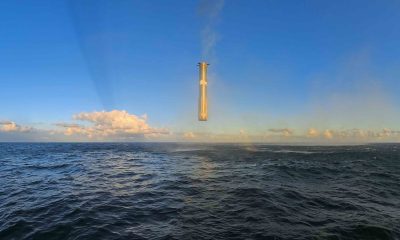
 Elon Musk2 weeks ago
Elon Musk2 weeks agoSpaceX posts Starship booster feat that’s so nutty, it doesn’t even look real
-
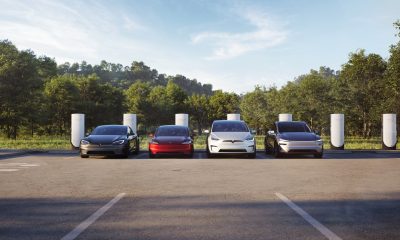
 Elon Musk2 weeks ago
Elon Musk2 weeks agoTesla Full Self-Driving gets an offer to be insured for ‘almost free’
-
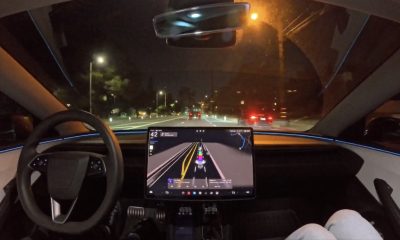
 News2 weeks ago
News2 weeks agoElon Musk confirms Tesla FSD V14.2 will see widespread rollout
-

 News2 weeks ago
News2 weeks agoTesla is adding an interesting feature to its centerscreen in a coming update
-
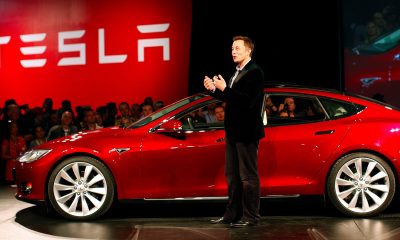
 Elon Musk2 weeks ago
Elon Musk2 weeks agoTesla CEO Elon Musk’s $1 trillion pay package hits first adversity from proxy firm
-
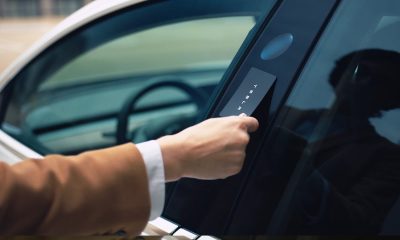
 News2 weeks ago
News2 weeks agoTesla might be doing away with a long-included feature with its vehicles
-
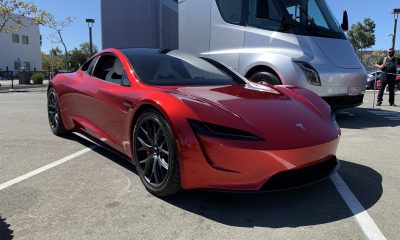
 News2 weeks ago
News2 weeks agoTesla updates fans on its plans for the Roadster
-

 Elon Musk2 weeks ago
Elon Musk2 weeks agoAfter moving Tesla to Texas, Elon Musk is back in the Bay Area with Neuralink expansion








